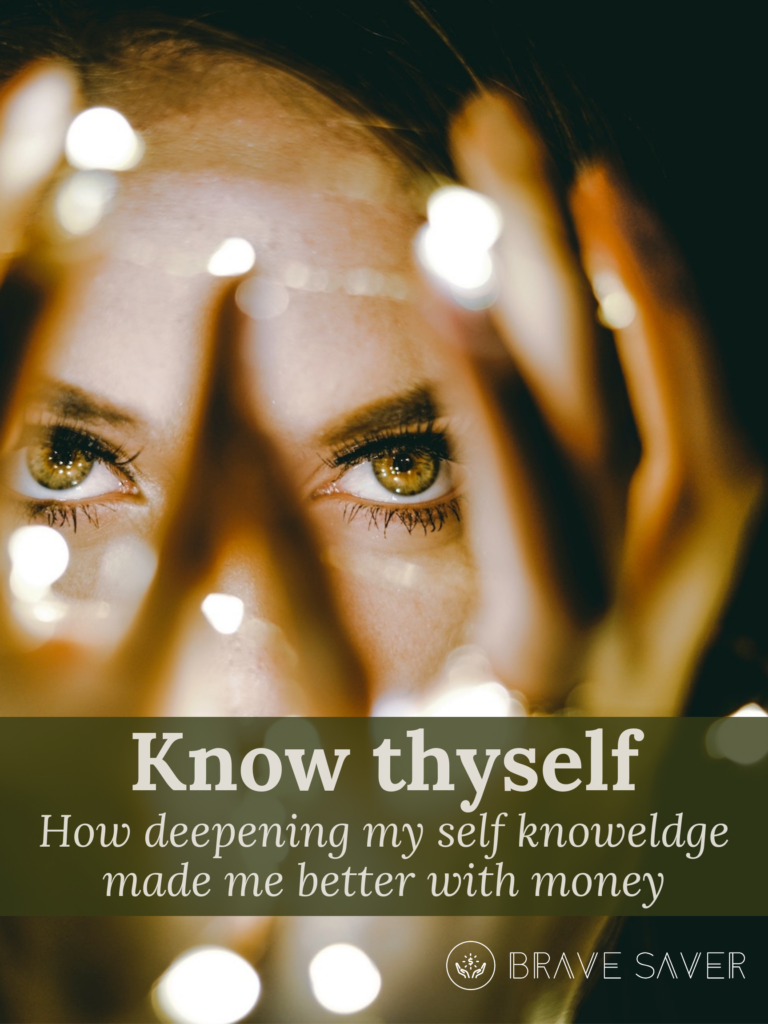
On the first day of middle school, every student was issued the same school planner. At the beginning of each class, I had to copy notes from the board into my planner: topics covered in class, the homework assignment, or other reminders.
It was annoying, and I did it. But once I’d zip the planner into my overweight backpack and it’d disappear out of sight and out of mind, wiped from my awareness of tools I could use to manage my school work.
The way I was taught to use planners never clicked with me. It seemed nonsensical to go through these motions each day knowing I’d never look at those notes again.
What's in this post
My blindspot: All planning, no followthrough
That sixth
- My husband and I sit down to review our budget, a spreadsheet where we’ve recorded our monthly income and expenses.
- We allocate for a few one-off items and review recent spending in Mint to see if we need to make adjustments.
- Then we set some goals and pat ourselves on the backs for being so responsible with our money.
- We exit Mint, close the budget spreadsheet, and barely think about our budget again until the next time we sit down to review it.
I go through the motions of tracking expenses and setting a budget. Then I feel better because I have all the appearances of responsibility, that makes it so, right?
Nope. Simply making a plan won’t lead to the outcomes I want. (Just ask my January spending, which imploded my monthly budget.)
I’ve spent years of my life going through these motions of responsible adulthood: attempting to manage things in the neat, careful, orderly way I’m “supposed” to. I read productivity books, made to-do lists, bought endless planners and journals, set timers, tracked habits.
It was honestly exhausting, but even more frustratingly, it never quite worked. Again and again, I’d apply productivity or money tips and they’d work. Eventually, I’d fall on my face and these hacks rarely solidified into baked-in behaviors or habits.
The end of my most recent try-hard cycle was even rougher than usual, marked by big-time burnout and anxiety I couldn’t push past. I was desperate to know why my efforts to improve failed again and again. Why didn’t
In pursuit of self-improvement, I lost view of myself
Eventually it occurred to me. The answer was, in fact, right there in the question:
These tips and hacks didn’t work because they didn’t work for me.
I’d made effort after effort at self-improvement without ever stopping to think about my needs as a unique individual.
I was trying to follow financial advice or life tips from people who thought and acted nothing like me. I didn’t think about what made sense for my background, my nature, the demands of my life, or what I valued and wanted to gain.
At the core of what I was missing in my self-improvement journey was, well, myself.
- I lacked the self-knowledge to know what was going on with me and what advice would work.
- I didn’t have the self-awareness to step back and see the bigger picture or long-term effects of my fix-it attempts.
- With no self-compassion, I couldn’t create my own safe space to try, fail, and fail again.
- Without all of these, I could not act with self-acceptance and make decisions in line with who I am and the realities of my life.
How to get to know yourself

What if there was a better way? If I could stop trying to hold myself to impossible standards, trying to meet my too-high expectations of myself. Then I could be hopeful again — believing that there were efforts I could make that would be effective, methods of self-management that would work.
Figuring that out, however, would mean getting to know
First, I needed to stop trying to fix the behaviors or outcomes — and instead look within. To stop combing books and blogs and podcasts for answers, and instead take an honest look at myself, get curious and ask more questions without fearing what I might find.
Building this self-awareness and getting past blindspots ain’t easy. Getting to know and accept myself on a deeper level has been a top priority for me over the past two years, and it’s still a work in progress. Even so, I’ve taken some steps that have helped my self-concept more quickly catch up to the reality of who I am.
Practice self compassion
The thoughts related to my money touched on some deep hurts and toxic financial shame. I often tried to act like others, because it was easier and less painful than looking at my own shortcomings and failures.
That’s where self compassion needed to come in. To tolerate the discomfort of taking a real, honest look at myself, I needed to be kind to myself and recognize my own humanity. Only by suspending my self-judgment could I take an honest inventory of myself and my financial thoughts and behaviors, without putting myself on trial.
Resource rec: “Self Compassion: The Proven Power of Being Kind to Yourself” by Kristin Neff helped me understand why I was hard on myself, and how I could change this pattern.
Write it out
Journaling has been a huge piece of getting to know myself better and become more aware of my inner world. I try to “morning pages” frequently, which is a stream-of-consciousness form of journaling that makes for a great daily practice.
But when I’ve had more specific frustrations or issues, I might sit down and write about it specifically. I’ll even direct questions to myself and then write out the answer. I’m often delighted to see that the wisdom and answers I’m seeking show up in my own dialogues with myself.
Take a trip back
I reviewed my money memories and past financial experiences. What was really going on when I made a money mistake? What supports were in place when I did better with my money?
As I reviewed my past decisions, I was able to tease out different patterns and trends with my money. I was also able to re-process some key moments that shaped my money and reframe them to build a healthier and more positive relationship with money.
Observe yourself

The ability to step back and become more aware of the current experience of myself and my mind (largely through meditation and mindfulness practices).
Over time, this practice has helped me see my own money thoughts and patterns in real-time. I notice what is happening, and often can even redirect or choose differently — rather than being stuck with my usual automatic response.
Resource rec: The research-backed practices I learned through Mindfulness
– Based Stress Reduction (MBSR) were invaluable for building my skills of self-observation and awareness. I love this MBSR site that offers free self-led online modules for an eight-week course in mindfulness techniques (did I mention they are free??).
Track and analyze the data
When I would have rather focused on a comforting narrative about my money, I looked at the data to remind myself I could be doing better. When I got too hard on myself or convinced I was failing, I similarly could point to hard numbers that proved I was making progress. I was better able to see, through hard data, when and what worked well — and what didn’t.
There are plenty of places to get hard numbers about my money. Checking balances on my assets and debts, calculating my net worth. Tracking my spending and adding a habit tracker to my journal has helped, too.
Seek alternate perspectives
Asking for different perspectives from people I love and trust has helped me see where my perceptions of myself might be inaccurate. The number one person I turn to for perspective is my husband. He has a frontrow view of my money management and offers exceptionally kind-yet-accurate critiques.
I’ve also talked about and asked for perspectives from other people who understand and support my current aims: friends, freelancing buddies, family members, and perhaps most helpfully, my therapist. Asking for feedback has filled in my money blindspots and even provided a financial reality check when needed.
Own what you want
Perhaps the most powerful piece of knowledge I’ve gained about myself is knowing what I want. In the past, I’d often shut down my own wants or turn the “volume” down on my needs to be more of what I or others thought I should be.
Getting to know myself was like turning the volume of my internal voice back up. The feelings were less dampened, the likes and dislikes more clear. My responsibility, then, was to respond in kind to this new internal source of input. I needed to give my emotions, thoughts, and desires as much weight as I did to anyone else’s.
In short, I needed to own what I wanted. To get honest about what wasn’t working anymore and what I wanted to quit. But to also start opening up the possibilities and give more space for dreaming, hoping, and building. I couldn’t really get to know this part of myself until I stopped saying “no” to it and started saying, at the very least, “maybe, let’s take a look.”
Applying self-awareness to more effectively manage money
At the heart of all of my self-improvement efforts was a belief that I wasn’t good enough, and that my problems were the result of a flawed character.
These years of ingrained beliefs and habits were a huge block to my ability to see myself clearly. Getting to know who I am on a deeper and more accepting level was not comfortable.
I’d been trying to compensate for that by being like other people, forcing myself to fit the molds set out for me.
But as I adjusted my thinking, I was more able to recognize what was working well and give myself credit when and where it was due. Developing a clearer picture of who I am and what that means, has helped me manage my finances better.
- I clearly see the reality of how I think, behave, and feel — and how that affects my money management
- I know who I am and what is important to me, and I make financial choices in line with what I value
- I know what my strengths and limitations are; I set expectations for myself that align and work within the reality of who I am, not who I wish I was
- I see and acknowledge changes, and evolve my self-image to match
How I budget based on who I am
Today, I’m getting better at sticking to my budget because I recognize what works for met.
To be honest, it’s still a work in progress. But I’ve found that “batching” my budgeting tasks is helpful.
I save my receipts for a
Another thing I know about myself is I don’t have the best memory or followthrough. So I try to externalize some of that, relying on systems outside myself. I know I might not always remember to handle the task of reviewing my budget. So instead of expecting that I will, I’ve set a weekly alarm to remind me to sit down and take care of it.
Because I’m more aware of how I work best, I can be pickier about the financial advice I follow and the strategies I attempt. I can more accurately evaluate tips for money management or
With sharper self-awareness, I can better analyze past behaviors and predict choices I’m likely to make in the future. Practicing deeper honesty with myself has also helped me better understand my financial reality and the reality of who I am — along with the possibilities of who I can be.

Main photo by Rhett Wesley on Unsplash




4 Comments
The Fuck Up Fund: Save for Your Messy Bitch Moments - Brave Saver
September 20, 2019 at 3:38 am[…] I was also forced into some self–awareness: I am a messy bitch. And I was starting to accept that maybe that wasn’t the worst thing in […]
Self-Management Matters More Than Money Management - Brave Saver
October 9, 2019 at 11:12 pm[…] developing self-awareness and knowledge means we can more quickly and easily identify what we need and the best way to go […]
You're the One Your Money Has Been Waiting For - Brave Saver
December 4, 2019 at 8:43 pm[…] turning inward and growing my self-awareness, I’ve found my own wisdom to make the hard but necessary choices. The resilience to let go of […]
Fighting Scarcity Mentality Is About More Than Just Money — or Beliefs - Brave Saver
December 13, 2019 at 7:19 pm[…] Get to know yourself and your stress responses. If you can notice you’re responding out of stress in the moment, that gives you a chance to course-correct in real time. Try out de-stressing strategies when you’re doing well, so you’ll have proven ways to cope when you’re not. […]